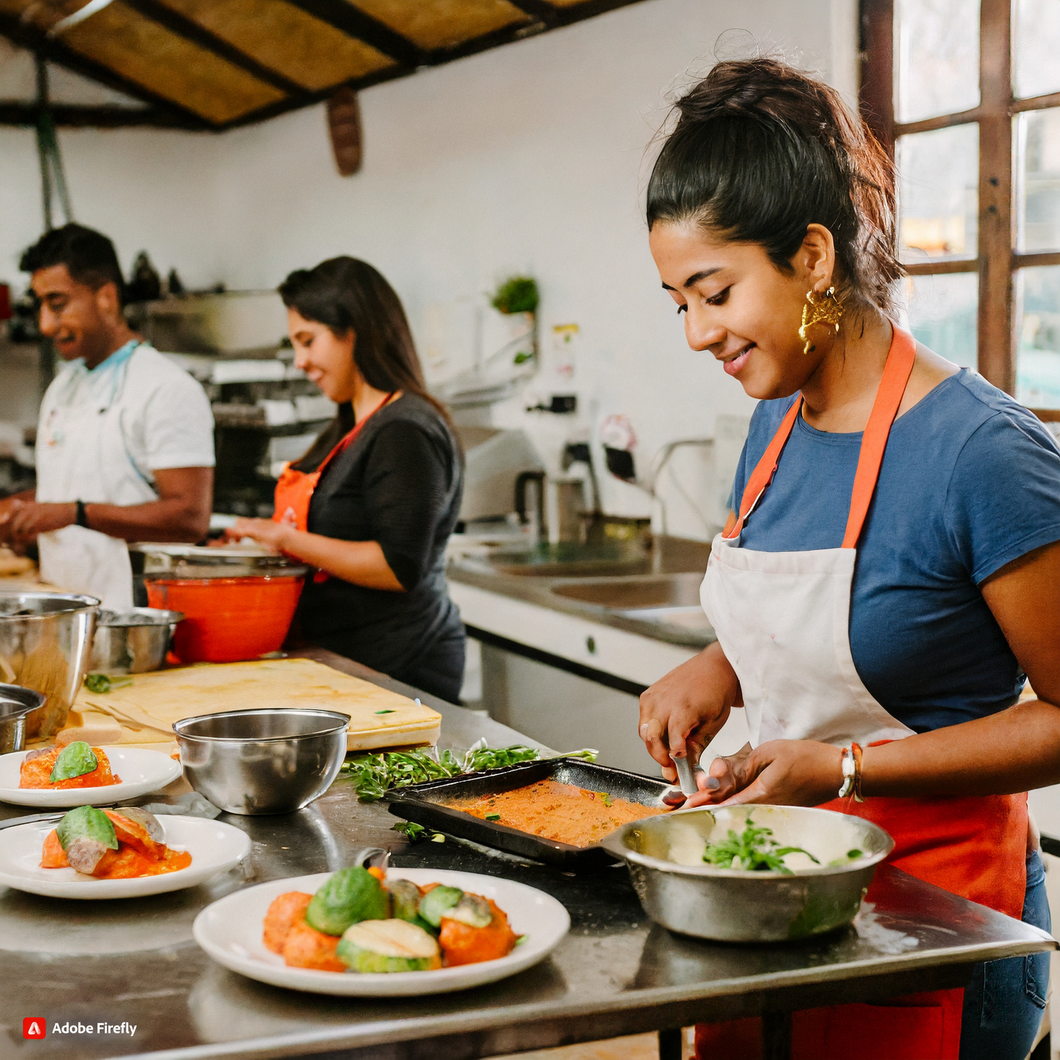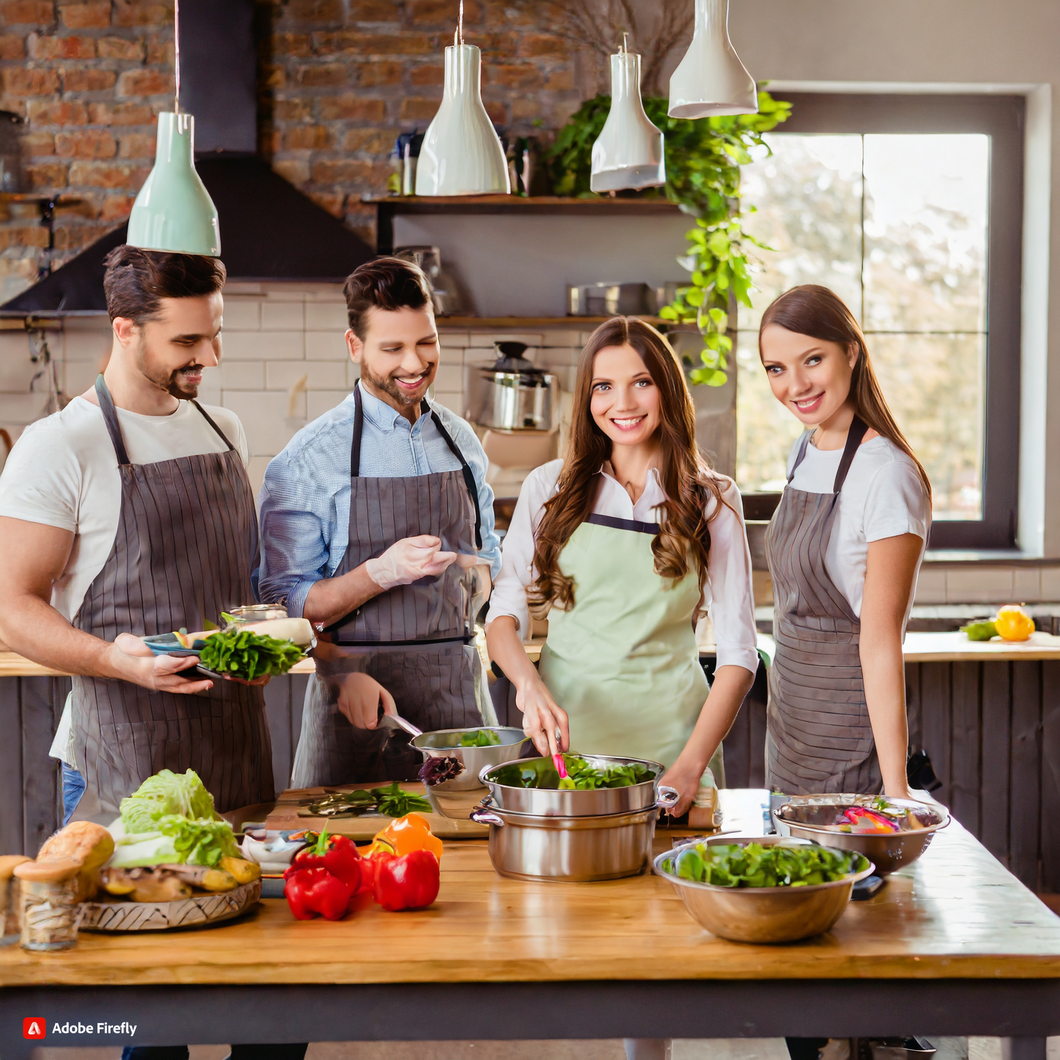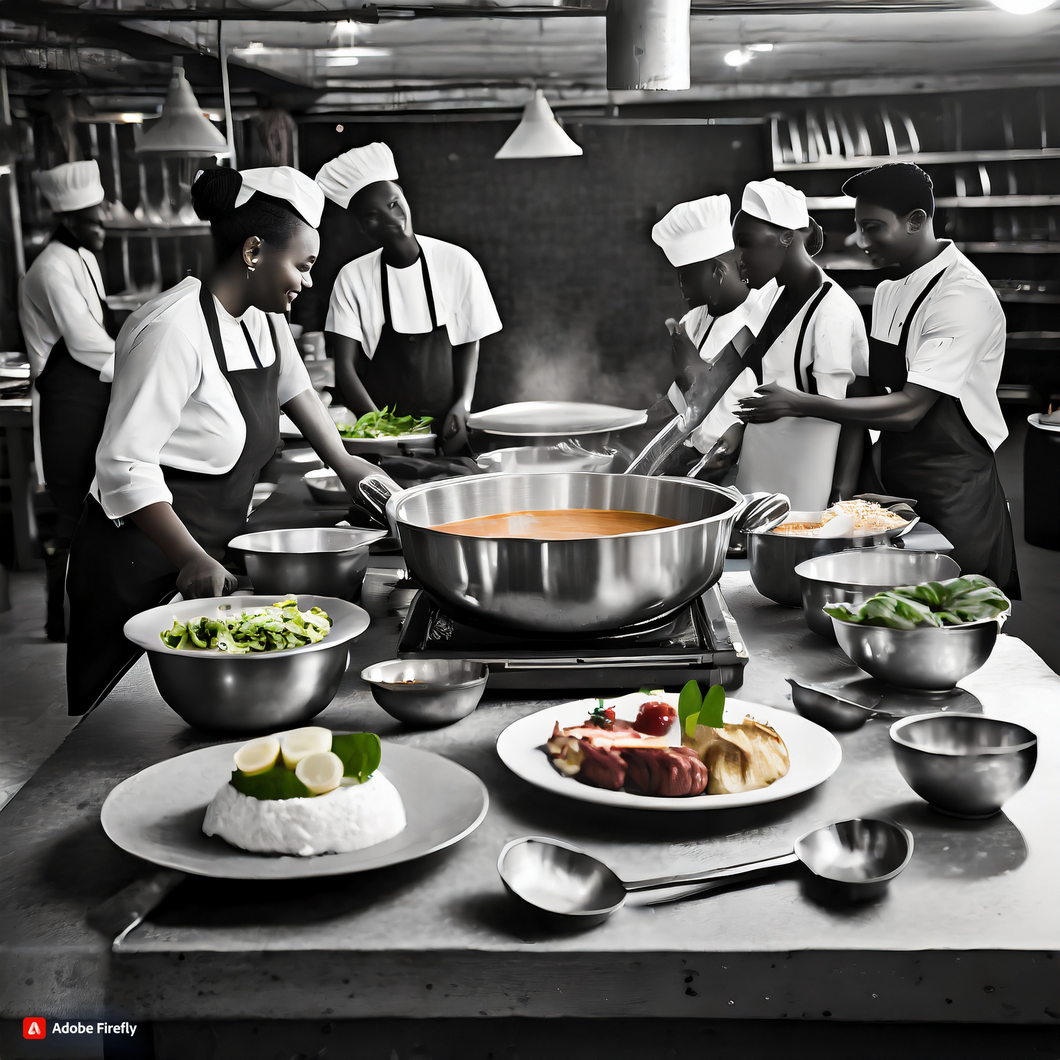Introduction
Workshop Series for Beginnersو Welcome to the Culinary Workshop Series: Essential Techniques for Beginners! This series is designed for those who are new to the world of cooking and want to learn the fundamental skills and techniques needed to create delicious and impressive dishes. Whether you’re a complete novice or have some basic cooking experience, this workshop series will provide you with the knowledge and hands-on practice to elevate your cooking skills and confidence in the kitchen.
From knife skills to flavor profiles, this series will cover all the essential techniques you need to become a successful home cook. Get ready to sharpen your culinary skills and impress your friends and family with your newfound cooking abilities. Let’s get cooking!
Knife Skills: Mastering the Basics
Are you a beginner in the kitchen, looking to improve your culinary skills? Look no further! Our culinary workshop series is here to help you master the essential techniques for cooking like a pro. In this article, we will focus on one of the most important skills in the kitchen – knife skills. Whether you’re chopping vegetables or slicing meat, having good knife skills is crucial for efficient and safe cooking.

First and foremost, it’s important to have the right tools for the job. Invest in a good quality chef’s knife, as it will be your go-to tool for most tasks in the kitchen. Make sure it feels comfortable in your hand and has a sharp blade. A dull knife can be dangerous and make your cutting tasks more difficult. Additionally, having a cutting board with a stable surface is essential for safety and precision.
Now, let’s get into the basics of knife skills. The first thing to keep in mind is to always hold the knife properly. Grip the handle firmly with your dominant hand and place your index finger and thumb on either side of the blade, just above the handle. This will give you better control and prevent the knife from slipping. Your other hand should be used to hold the food you are cutting, with your fingers curled under and your knuckles acting as a guide for the knife.
When it comes to cutting, the most important thing is to have a sharp blade. A sharp knife will make your cutting tasks easier and more precise. To test if your knife is sharp, gently run your finger along the blade. If it feels smooth, it’s sharp. If it feels rough or catches on your finger, it’s time to sharpen it. You can use a sharpening stone or a honing steel to keep your knife sharp.
Now, let’s talk about the different cutting techniques. The first one is the chop, which is used for cutting vegetables into small, even pieces. Start by holding the knife at a 90-degree angle to the cutting board and use a rocking motion to chop the food. The second technique is the slice, which is used for cutting larger pieces of food into thinner slices. Hold the knife at a 45-degree angle and use a back and forth motion to slice through the food.
Another important technique is the julienne, which is used for cutting vegetables into thin, matchstick-like pieces. Start by cutting the vegetable into thin slices, then stack the slices and cut them into thin strips. The final technique we will cover is the chiffonade, which is used for cutting leafy greens or herbs into thin strips. Stack the leaves, roll them tightly, and then use a rocking motion to cut them into thin strips.
Practice makes perfect when it comes to knife skills. Start with simple tasks like chopping onions or slicing tomatoes, and gradually move on to more challenging tasks. Remember to always keep your fingers curled under and use your knuckles as a guide to prevent any accidents. And don’t forget to keep your knife sharp for efficient cutting.
In addition to these basic techniques, there are also some tips and tricks that can help improve your knife skills. For example, using a damp towel or paper towel under your cutting board can prevent it from slipping. And when cutting round or irregularly shaped foods, such as carrots or potatoes, cut a small slice off one side to create a flat surface before cutting.
In conclusion, mastering knife skills is essential for any beginner cook. With the right tools, proper technique, and practice, you can become a pro in no time. So, don’t be afraid to pick up that knife and start honing your skills. Stay tuned for our next article in the culinary workshop series, where we will cover another essential technique for beginners. Happy cooking!
Cooking Fundamentals: From Sauteing to Roasting
Are you a beginner in the kitchen, looking to improve your cooking skills? Look no further! Our culinary workshop series is here to help you master essential techniques that will elevate your cooking game. In this section, we will cover the basics of cooking fundamentals, from sautéing to roasting. So, let’s get started!
First and foremost, let’s talk about sautéing. This cooking method involves cooking food quickly in a small amount of fat over high heat. It’s a great way to cook vegetables, meats, and seafood, as it allows them to retain their natural flavors and textures. To sauté, start by heating a small amount of oil or butter in a pan over medium-high heat. Once the oil is hot, add your ingredients and stir constantly to prevent them from burning. Sautéing is all about quick and constant movement, so be sure to keep your ingredients moving in the pan. This technique is perfect for making stir-fries, searing meats, and creating flavorful sauces.

Next up, let’s talk about braising. This method involves cooking food slowly in a covered pot with a small amount of liquid. It’s a great way to tenderize tougher cuts of meat and infuse them with flavor. To braise, start by searing your meat in a hot pan to lock in the juices. Then, transfer the meat to a pot and add your liquid of choice, such as broth, wine, or water. Cover the pot and let it cook on low heat for a few hours until the meat is tender and falls apart easily. Braising is a great technique for making stews, pot roasts, and other hearty dishes.
Moving on to roasting, this method involves cooking food in the oven at a high temperature. It’s a great way to cook meats, vegetables, and even fruits. To roast, start by preheating your oven to the desired temperature. Then, place your ingredients on a baking sheet or in a roasting pan and drizzle them with oil or butter. Roasting allows the food to caramelize and develop a crispy exterior while retaining its moisture and flavor. It’s a great way to cook a whole chicken, root vegetables, and even fruits like apples and pears.
Now, let’s talk about grilling. This cooking method involves cooking food over an open flame or hot coals. It’s a great way to add a smoky flavor to your dishes and is perfect for cooking meats, vegetables, and even fruits. To grill, start by preheating your grill to medium-high heat. Then, brush your ingredients with oil or marinade and place them on the grill. Keep an eye on your food and flip it occasionally to ensure even cooking. Grilling is a great way to cook burgers, steaks, and vegetables like corn and asparagus.
Last but not least, let’s discuss poaching. This method involves cooking food in a liquid at a low temperature. It’s a great way to cook delicate foods like fish, eggs, and fruits. To poach, start by heating your liquid of choice, such as water, broth, or milk, in a pot. Once the liquid is hot, gently add your ingredients and let them cook until they are tender and cooked through. Poaching is a great technique for making poached eggs, fish fillets, and even poached pears for a delicious dessert.
In conclusion, mastering these essential cooking techniques will not only improve your skills in the kitchen but also allow you to create delicious and flavorful dishes. So, don’t be afraid to experiment and try out these methods in your cooking. With practice and patience, you’ll become a pro in no time. Stay tuned for our next article in the culinary workshop series, where we will cover more advanced techniques for you to add to your cooking repertoire. Happy cooking!
Flavor Pairing and Seasoning: Elevating Your Dishes
Are you tired of cooking the same old dishes and want to take your culinary skills to the next level? Look no further than our Culinary Workshop Series: Essential Techniques for Beginners. In this series, we will cover all the basics of cooking, from knife skills to flavor pairing and seasoning. In this article, we will focus on the importance of flavor pairing and seasoning in elevating your dishes.
Flavor pairing is the art of combining different ingredients to create a harmonious and balanced taste. It involves understanding the flavors of different ingredients and how they work together. By mastering flavor pairing, you can take your dishes from ordinary to extraordinary.

The first step in flavor pairing is to understand the five basic tastes: sweet, sour, salty, bitter, and umami. These tastes can be found in various ingredients and can be used to enhance the overall flavor of a dish. For example, adding a touch of sweetness to a savory dish can balance out the flavors and make it more enjoyable. Read easy Healthy Lunch for Weight Loss.
Another important aspect of flavor pairing is understanding the flavor profiles of different ingredients. For instance, herbs like basil and thyme have a strong earthy flavor, while spices like cumin and paprika have a warm and smoky taste. By knowing the flavor profiles of ingredients, you can pair them together to create a well-balanced dish.
One of the most common mistakes in flavor pairing is using too many strong flavors in one dish. This can result in a dish that is overwhelming and unappetizing. Instead, try to use a combination of mild and strong flavors to create a balanced taste. For example, if you are using a strong-flavored ingredient like garlic, balance it out with a milder ingredient like onions.
Seasoning is another crucial aspect of cooking that can make or break a dish. It involves adding salt, pepper, and other spices to enhance the flavor of a dish. The key to successful seasoning is to do it in layers. This means adding a little bit of seasoning at a time and tasting as you go. This way, you can adjust the seasoning according to your taste and avoid over-seasoning.
When it comes to seasoning, it’s important to use high-quality ingredients. Freshly ground pepper and sea salt can make a huge difference in the flavor of a dish compared to pre-ground spices. It’s also important to use the right amount of seasoning. Too little can result in a bland dish, while too much can overpower the other flavors.
Experimenting with different herbs and spices is a great way to elevate your dishes. Don’t be afraid to try new combinations and trust your taste buds. You can also get creative with your seasoning by using different techniques like dry rubs, marinades, and brines.
In addition to flavor pairing and seasoning, it’s important to consider the texture of your dishes. A dish that has a variety of textures, such as crunchy, creamy, and chewy, can be more enjoyable to eat. This can be achieved by using a combination of ingredients with different textures, such as adding nuts or crispy vegetables to a creamy pasta dish.
In conclusion, flavor pairing and seasoning are essential techniques for elevating your dishes. By understanding the basic tastes, flavor profiles, and using high-quality ingredients, you can create well-balanced and flavorful dishes. Don’t be afraid to experiment and trust your taste buds. With practice, you will become a master at flavor pairing and seasoning, taking your cooking skills to the next level. Stay tuned for our next article in the Culinary Workshop Series, where we will cover the art of plating and presentation. Happy cooking!
Q&A – Workshop Series for Beginners
Q: What is the Culinary Workshop Series?
A: The Culinary Workshop Series is a series of classes designed to teach essential cooking techniques to beginners.
Q: Who is the target audience for the Culinary Workshop Series?
A: The target audience for the Culinary Workshop Series is beginners who are interested in learning basic cooking techniques.
Q: What can participants expect to learn from the Culinary Workshop Series?
A: Participants can expect to learn essential techniques such as knife skills, cooking methods, and flavor profiles, as well as how to apply them in various recipes.
Conclusion for Workshop Series for Beginners
In conclusion for Workshop Series for Beginners, the Culinary Workshop Series: Essential Techniques for Beginners is a valuable resource for those looking to improve their cooking skills. Through hands-on instruction and guidance from experienced chefs, participants can learn essential techniques and gain confidence in the kitchen.
This workshop series is a great opportunity for beginners to develop a strong foundation in cooking and explore new flavors and cuisines. Whether for personal growth or professional development, the Culinary Workshop Series is a great investment for anyone looking to enhance their culinary skills.
Please follow us on linkedin. You can learn all best canadian food recipes you can check our Culinary 1TouchFood Youtube and Telegram 1TouchFood page. Don’t forget Fighting Obesity Magazine and Radio Cooking.

